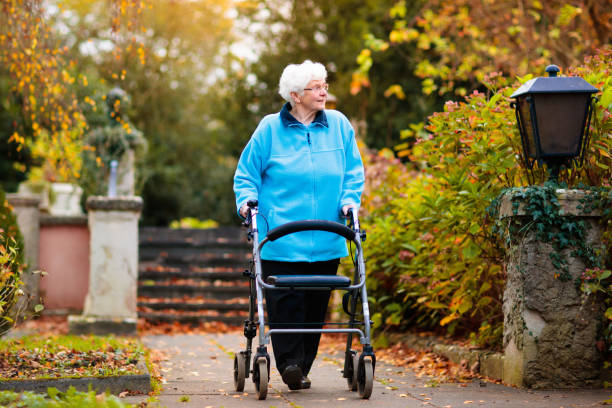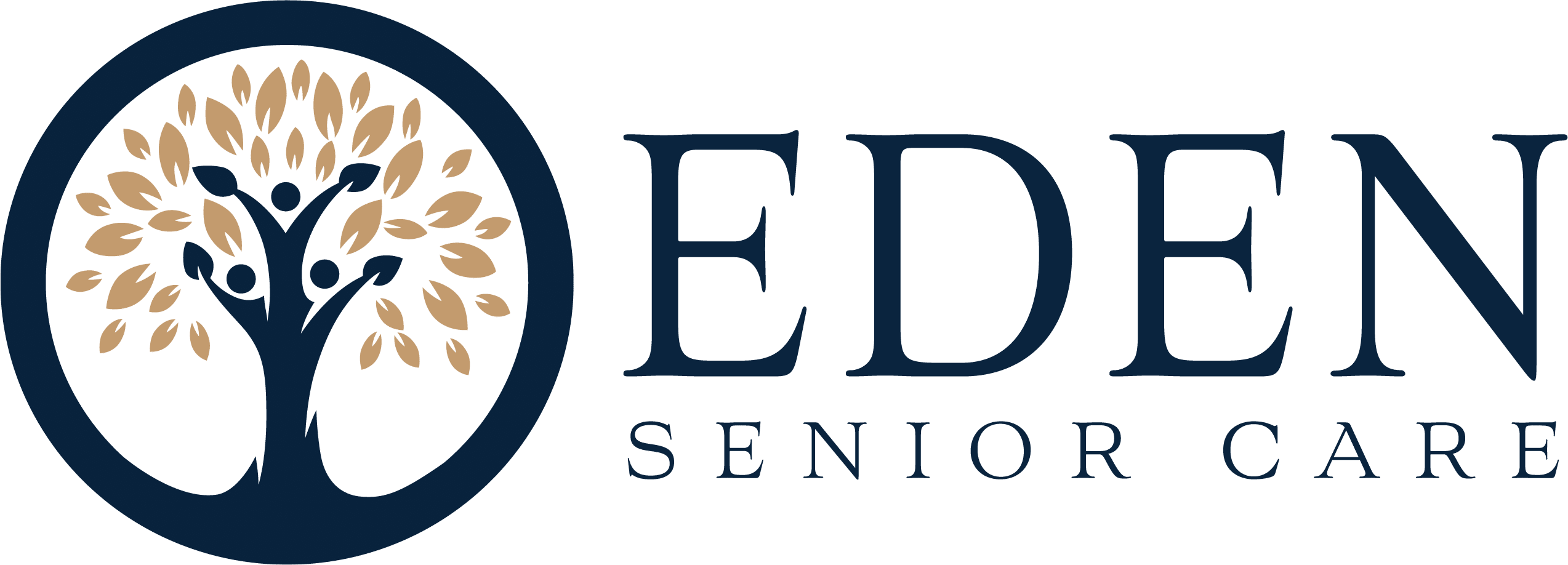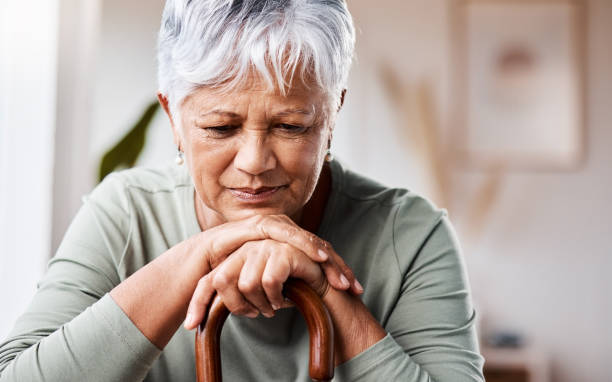Physical disabilities in older adults are a significant public health concern and a leading cause of functional impairments and reduced quality of life. These disabilities represent diverse conditions, each with unique characteristics and challenges. Understanding these conditions is paramount for healthcare providers, caregivers, and families to provide appropriate care and support, enhancing the individual’s independence and overall well-being.
This article dives into the common physical disabilities encountered in older adults, detailing their causes, symptoms, and potential interventions for management.
Contents
Common Physical Disabilities in Older Adults
Below are some of the most common physical disabilities encountered in older adults:
Arthritis
One of the most common physical disabilities in older adults is arthritis, a condition characterized by inflammation and stiffness of the joints. It primarily results from wear and tear of joint tissues, a process that accelerates with age. Symptoms include joint pain, tenderness, stiffness, and reduced range of motion. Non-pharmacological interventions such as physical therapy, lifestyle modifications, and medication can help manage the symptoms and maintain mobility.
Osteoporosis
Osteoporosis is a condition that weakens bones, making them fragile and more prone to fractures. It often develops silently over many years, with symptoms becoming apparent only when a minor fall or sudden impact causes a fracture. Nutritional and lifestyle modifications and medication can prevent further bone loss and reduce the risk of fractures.
Vision Impairment
Age-related vision impairment, including conditions such as cataracts, age-related macular degeneration, and glaucoma, is common in older adults. These conditions can significantly impact daily living activities. Regular eye check-ups, early detection, and appropriate treatment can prevent or slow down the progression of these conditions.
Hearing Loss
Hearing loss, or presbycusis, is a common issue in older adults. It can lead to difficulties in communication, social isolation, and decreased quality of life. Hearing aids, cochlear implants, and assistive listening devices are among the intervention measures that can improve hearing and communication.
Cardiovascular Diseases
Cardiovascular diseases, including heart disease and hypertension, are prevalent in the elderly population. These conditions can lead to physical disability, particularly when left untreated. Regular check-ups, a healthy diet, regular exercise, and medication can help manage these conditions and promote heart health.
Coping and Living with Physical Disabilities in Old Age
Living with a physical disability in later life can be challenging, but with the right support and resources, individuals can lead fulfilling lives. The key lies in recognizing the disability, understanding its implications, and taking proactive measures toward managing it.
This may include adopting lifestyle modifications, utilizing assistive devices, engaging in physical therapy or other forms of rehabilitation, and seeking emotional support. In the subsequent sections, we will delve deeper into strategies and resources that can assist older adults with physical disabilities and their caregivers in navigating daily life.
Physical Therapy and Rehabilitation
Physical therapy and rehabilitation are vital components in the management of physical disabilities in older adults. Through individualized treatment plans, these interventions can help improve mobility, alleviate pain, and increase strength and balance.
Assistive Devices

Assistive devices, such as walkers, canes, hearing aids, and wheelchairs, play a crucial role in enhancing independence and improving the quality of life for older adults with physical disabilities. They provide necessary support, promote mobility, and enable participation in daily activities.
Nutritional Considerations
Proper nutrition is essential in managing physical disabilities in older adults. A balanced diet, rich in essential nutrients, can help improve overall health, enhance energy levels, and speed up recovery.
Mental Health and Emotional Support
The presence of physical disabilities can often lead to stress, anxiety, and depression in older adults. Therefore, their mental and emotional well-being must be addressed. Emotional support, counseling, and certain therapeutic activities can be beneficial in maintaining mental health.
Caregiver Support
Caregivers play an essential role in caring for older adults with physical disabilities. Providing them with the necessary support, education, and resources is crucial to ensure they can effectively care for their loved ones while also maintaining their well-being.
Regular Health Check-ups
Regular health check-ups play a pivotal role in the early detection and effective management of physical disabilities in older adults. These check-ups, which include routine screenings and tests, can identify potential health issues at their onset, enabling timely intervention and treatment.
Home Modifications
Modifying the home environment to accommodate physical disabilities can significantly enhance safety and mobility for older adults. This may involve installing ramps, grab bars, or stairlifts, widening doorways, and modifying bathrooms and kitchens for easier accessibility.
Community Resources
Community resources, such as social services, support groups, and recreational programs, can be valuable for older adults with physical disabilities. They provide opportunities for social interaction, mental stimulation, and physical activity, thereby enhancing well-being and quality of life.
Legal and Financial Planning
Legal and financial planning are critical aspects of managing physical disabilities in old age. This may involve creating an advance healthcare directive, establishing a power of attorney, or planning for long-term care costs. Professional guidance can help navigate these complex issues.
Adaptation Strategies for Daily Living Activities
Adjusting to life with a physical disability is a continuous process that requires adaptation and resilience. Daily living activities, which might include cooking, cleaning, personal hygiene, and mobility, may pose challenges for older adults with physical impairments. However, numerous strategies and assistive technologies are available to facilitate these activities, promoting independence and enhancing quality of life.
Cooking Adaptations
Adapting the cooking process can make it more accessible and less strenuous for older adults with physical disabilities. This may include using lightweight and easy-to-grip utensils, installing lever-style faucets, and arranging commonly used items within easy reach.
Cleaning Adaptations
Older adults can use long-handled dusters and scrub brushes, a lightweight vacuum, or a robot vacuum for automatic cleaning to make cleaning tasks less physically demanding. Modifying the frequency or method of cleaning can also be beneficial.
Personal Hygiene Adaptations
Adapting personal hygiene routines can enhance comfort and safety. This can involve using a shower chair or handheld shower head, installing grab bars around the toilet and bathtub, and using adaptive equipment for grooming and dressing.
Mobility Adaptations
Improving mobility can significantly enhance a person’s independence and quality of life. This may include using assistive devices like canes, walkers, or wheelchairs, installing ramps or lifts, and utilizing transportation services designed for individuals with physical disabilities.
Communication Adaptations
Numerous communication adaptations, such as hearing aids, speech-to-text apps, and sign language, are available for those with hearing or speech difficulties. These tools can help facilitate communication and promote social interaction.
Sleep Adaptations
Ensuring a good night’s sleep is essential for overall health. Sleep adaptations might include using a bed rail for added support, an adjustable bed to make getting in and out easier, or special pillows to provide extra comfort and support.
Recreation and Leisure Adaptations
Recreational activities are key to maintaining mental well-being and fostering social connections. Adaptations for these activities could include accessible sporting equipment, adapted board games, and hobbies that accommodate physical limitations.
Outdoor Activity Adaptations
Engaging in outdoor activities can have significant physical and mental health benefits. Adapting these activities for individuals with physical disabilities could involve using a motorized scooter for mobility, participating in adapted versions of sports, or exploring accessible nature trails.
Conclusion
Physical disabilities can present numerous challenges for older adults, but with appropriate management and adaptations, these individuals can lead fulfilling lives. By addressing nutritional needs, providing mental and emotional support, offering caregiver support, promoting regular health check-ups, making home modifications, utilizing community resources, and implementing adaptation strategies for daily living activities, it is possible to enhance the well-being and quality of life of older adults living with physical disabilities.

